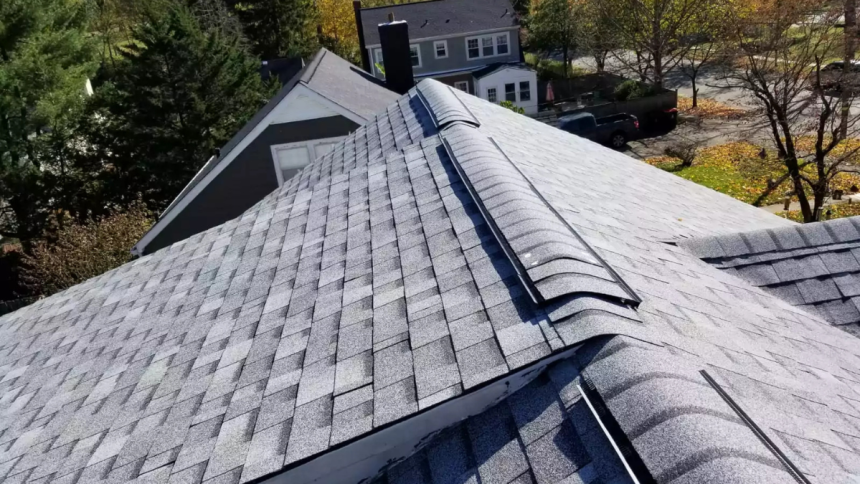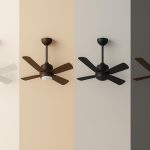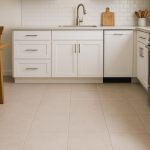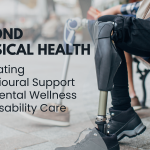Indoor air quality is a topic often reserved for HVAC systems, filters, and open windows. Yet one major player in the air you breathe is above your head—your roof.
Roofing isn’t just about aesthetics or protection from the elements. It’s a barrier between your indoor environment and the outside world. And if it’s compromised, poorly installed, or made from the wrong materials, your health and comfort can suffer.
From moisture intrusion to insulation choices, roofing directly impacts the air inside your home. Let’s explore the less obvious—but highly important—relationship between your roof and the quality of the air you breathe every day.
Moisture: The Invisible Culprit
When most people think of roofing damage, they imagine leaks or missing shingles. But small amounts of moisture, often undetectable without close inspection, can slowly seep into your home and create conditions ripe for mold and mildew.
These microorganisms don’t need floods to grow—just damp insulation or slow roof deck rot can be enough. Once airborne, mold spores compromise indoor air, triggering allergies, asthma, and other respiratory issues.
If your home feels damp, smells musty, or creates symptoms that disappear when you leave, your roof may be the reason.
Even new homes aren’t immune if roofing systems aren’t properly sealed or ventilated. That’s why reputable companies like AG Exterior Solutions focus on moisture control as a fundamental part of roofing—not just an added bonus.
Ventilation: The Balance of In and Out
A healthy roof isn’t just about keeping water out—it’s also about letting air flow through.
Proper attic ventilation is one of the most overlooked components of a healthy roofing system. It regulates temperature, prevents condensation, and reduces indoor pollutants by circulating air.
Without ventilation, heat and moisture build up in attic spaces. This accelerates material degradation and allows mold to flourish. It also pushes hot, moist air downward, which can compromise insulation and create a humid environment throughout your home.
Roofing systems should allow cool air to enter from soffit vents and warm air to exit through ridge or gable vents. This balance isn’t just structural—it’s environmental.
A poorly ventilated roof suffocates your home from the top down.
Insulation: More Than Temperature Control
Insulation is typically installed between rafters or beneath the roof deck to keep heat in during winter and out during summer. But insulation also acts as a barrier to airborne particles, allergens, and even chemical off-gassing from roofing materials themselves.
High-quality insulation paired with the right roofing underlayment helps seal out outdoor pollutants, pollen, and particulates. It also reduces energy use, minimizing reliance on air systems that recirculate stale air.
In contrast, degraded or poorly installed insulation traps moisture and harbors dust—two major culprits of indoor air issues.
Roofing professionals in Hendersonville know that proper insulation isn’t just an efficiency decision. It’s a healthy decision.
Roofing Materials: Hidden Emissions
Not all roofing materials are created equal—especially when it comes to air quality.
Some lower-cost materials contain adhesives, sealants, or finishes that off-gas volatile organic compounds (VOCs) over time. These substances can accumulate indoors, contributing to headaches, fatigue, and longer-term health risks.
On the other hand, metal roofs, clay tiles, and natural wood shakes—when treated properly—can minimize chemical emissions. Even asphalt shingles, when certified as low-VOC and installed with care, can offer safer air quality outcomes.
It’s not always about the material itself, but how it’s treated, sealed, and maintained.
If you’re replacing your roof and concerned about air purity, it’s worth asking questions—not just about appearance or longevity, but about environmental impact too. Teams like AG Exterior Solutions are equipped to discuss options with both performance and occupant health in mind.
Leak Detection: A Proactive Health Measure
Leaks aren’t always visible. Some start as pinhole drips, tucked away behind drywall or ceiling panels. Over time, they become slow-moving mold factories—out of sight, but never out of the air.
Routine inspections help catch these problems before they affect your breathing space. Moisture meters, infrared scanning, and detailed attic inspections are just some of the tools used to ensure your roof isn’t silently contributing to a health hazard.
Proactive homeowners often schedule roof assessments not because of a recent storm—but because of unexplained humidity, air quality issues, or allergy symptoms indoors.
Pests and Pollutants
A compromised roof can also invite unwanted guests—rodents, birds, and insects—each of which brings allergens and bacteria with them.
Once inside attic or ceiling cavities, these pests leave behind droppings, dander, and nests—all of which can break down into airborne irritants.
Even if you never hear them or see damage, a weakened fascia, vent screen, or flashing may be all it takes for critters to sneak in. From there, the pollutants they carry become part of your home’s internal atmosphere.
Preventing this kind of intrusion starts at the top. Solid, well-maintained roofing not only keeps out weather—but also keeps out health risks.
Building Codes Are Catching Up
As science continues to uncover the link between building envelopes and occupant health, regulations are beginning to shift. Some newer codes already factor indoor air quality into roof ventilation and insulation requirements.
While not every jurisdiction has updated its codes yet, working with contractors who go beyond minimum compliance can offer peace of mind.
In practice, that means integrating breathable membranes, balanced airflow systems, and high-performance sealing—all of which contribute to cleaner air inside.
Final Thought: Breathe Easy From the Top Down
We tend to think of air quality as something that starts at the floor—filters, plants, air purifiers. But in truth, it begins above.
Your roof shapes the moisture, air exchange, insulation, and filtration conditions for everything below it. When it’s healthy, your whole house breathes easier. When it’s not, the consequences show up in ways most people never trace back to the source.
So the next time you think about your roof, think beyond shingles. Think about health. About humidity. About airflow.
And if you’re due for an inspection or a replacement, ask questions that go deeper than just price or color. Talk to professionals who understand the full picture.
Because your roof isn’t just shelter—it’s a silent partner in the quality of your life inside.
Lynn Martelli is an editor at Readability. She received her MFA in Creative Writing from Antioch University and has worked as an editor for over 10 years. Lynn has edited a wide variety of books, including fiction, non-fiction, memoirs, and more. In her free time, Lynn enjoys reading, writing, and spending time with her family and friends.















